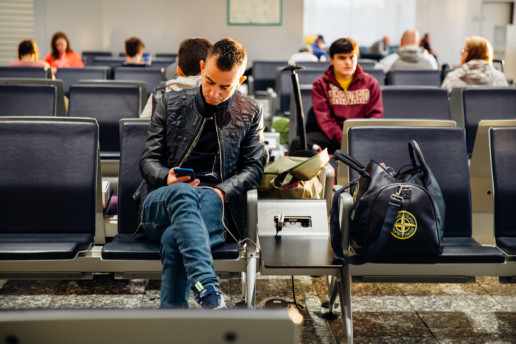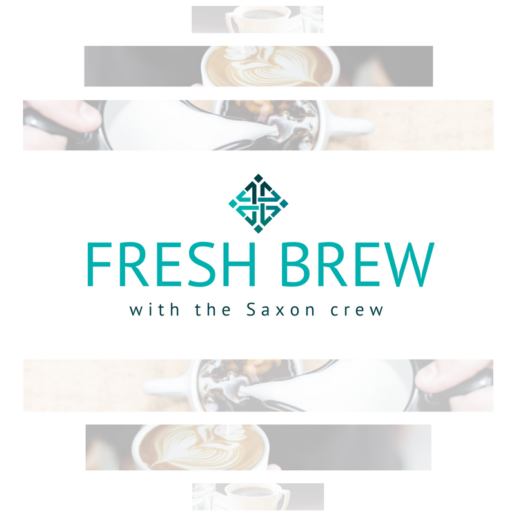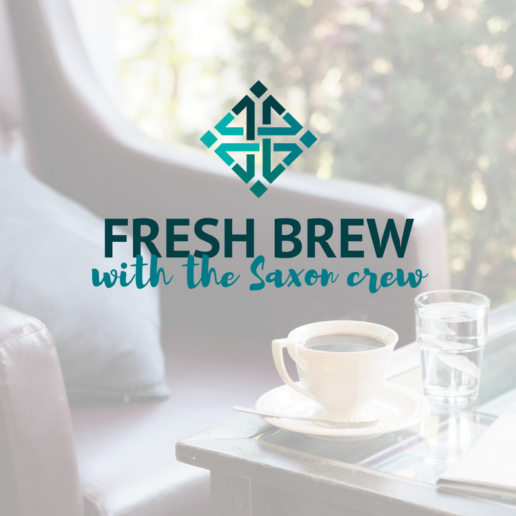Facial Analysis Technology in the Workplace Brings Risks
Technology is a forever-changing topic and a forever-advancing field. Most recently, facial recognition technology has been a topic of discussion when talking about technology. Read this blog post to learn more.
Facial recognition technology has been under the microscope as organizations and lawmakers re-evaluate its use in the wake of global protests about racial injustice. Technology giants Amazon, IBM and Microsoft all recently announced that they would stop selling facial recognition technology to police departments in the United States, citing the technology's potential for violating human rights and concerns about racial profiling.
Recent research has shined a light on some inherent dangers of using the technology. One study by MIT and Stanford University found that three commercially released facial analysis technologies showed skin-type and gender biases. The study found that the technology performed better for men and lighter-skinned people and worse for darker-skinned women.
The American Civil Liberties Union (ACLU) as well as other human rights groups and privacy advocates also have raised concerns about privacy and surveillance issues tied to use of the technology.
Evaluating Job Candidates
Some vendors in the human resources industry have long used facial analysis technology to help evaluate video interviews with job candidates. These artificial intelligence (AI) tools scan facial expressions and movements, word choice, and vocal tone to generate data that help recruiters make hiring decisions. Vendors say the tools can help reduce hiring costs and improve efficiencies by speeding the screening and recruiting of new hires.
But experts say that if these facial analysis algorithms aren't trained on large or diverse-enough datasets, they're prone to consistently identify some applicants—such as white men—as more employable than others. For example, the MIT and Stanford study found that one major U.S. technology company claimed an accuracy rate of more than 97 percent for a facial recognition algorithm it designed. Yet the dataset it was trained on was more than 77 percent male and more than 83 percent white.
Josh Bersin, a global HR industry analyst and dean of the Josh Bersin Academy in Oakland, Calif., said some HR vendors have embedded facial analysis technology into their video-interviewing tools with the goal of identifying job candidates' demonstrated stress, misrepresentations and even mood.
"These vendors have tried very hard to validate unbiased analysis, but they are taking risks by doing so," Bersin said. "The best solution is to use these tools very carefully and make sure you perform tests across very large samples before you trust these systems."
The use of facial analysis technology to evaluate job candidates is "very problematic," said Frida Polli, founder and CEO of the New York-based assessment company Pymetrics. "The science of the technology in terms of what it really says about someone is extremely new and not well-validated, and certainly not well-validated for HR uses," she said.
Results should be viewed with a skeptical eye if the technology is used for any assessment of job candidates' character or behavior, said Elaine Orler, CEO of the Talent Function, a talent acquisition consulting firm in San Diego. "The technology solutions aren't accurate in this area, and they leave too much to chance in terms of creating false positives or negatives," she explained. "To understand micro-expressions, for example, would require a deeper understanding of that one person's behaviors and not just a crowdsourced base line of everyone's expected expressions."
Some experts say facial recognition technology isn't without value in the workplace, especially in the age of COVID-19. Orler said using the technology as a biometric tool to grant access to parts of a building or as a touchless replacement for time clocks can be a good solution to reduce the spread of the coronavirus.
"Badges and other products that hold credentials often need to touch products that have been touched by others, and fingerprint scanners also have such dangers," she said.
Legal and Privacy Concerns
The use of facial recognition technology is now governed by laws in a growing number of states. Kwabena Appenteng, an attorney specializing in workplace privacy and information security with Littler in Chicago, said most employers are now aware of the landmark Illinois Biometric Information Privacy Act (BIPA) that requires companies implementing facial recognition technology in that state to obtain consent from subjects and to provide a written policy about how collected data will be stored, protected and used. Appenteng said more states—including California and Texas—also now require employers using the technology to satisfy certain compliance obligations.
Illinois and Maryland also have placed restrictions on facial analysis technology specifically for use in evaluating job candidates. California and New York have proposed similar legislation to regulate the use of artificial intelligence in assessing job applicants, said Monica Snyder, an attorney with Fisher Phillips in Boston and New York City and a member of the firm's data security and workplace privacy practice.
Illinois enacted its Artificial Intelligence Video Interview Act earlier this year, a law that requires companies using the technology to notify applicants in advance that the technology will be used to analyze their facial expressions, to obtain consent for its use, to explain to applicants how AI works and to destroy video interviews within 30 days if a candidate makes such a request, Snyder said.
"Employers need to tread carefully on how they use this technology," she said.
Appenteng said there's also the issue of getting employee buy-in for using facial recognition technology since many may consider it a risk to their privacy. "Employers may therefore want to consider providing their employees with a notice that explains facial recognition technology in easy-to-understand terms to placate any of those employee concerns," he said.
SOURCE: Zielinski, D. (09 June 2020) "Facial Analysis Technology in the Workplace Brings Risks" (Web Blog Post). Retrieved from https://www.shrm.org/resourcesandtools/hr-topics/technology/pages/facial-analysis-technology-workplace-brings-risks.aspx
Navigating the New Normal in International Business Travel
The coronavirus pandemic has placed many restrictions on travel for both leisure and business. As parts begin to open up and lift certain regulations, organizations are now looking at travel for the business, and if those are possibilities once again. Read this blog post to learn more.
What can your company expect in terms of your employees' ability to travel internationally as parts of the world begin to come out of months of lockdown?
And what will the ongoing restrictions and changes in everyday life mean for your company's ability to transfer or hire new foreign national talent in key areas? Only time will tell exactly what will happen, but we are beginning to see patterns and hints of what is to come.
Some countries that have managed to flatten the curve of COVID-19 infections are gradually easing restrictions on freedom of movement and commerce. This is typically being undertaken cautiously and in a multistep fashion. Other countries have been slower to ease travel restrictions. A broad travel ban remains in place in China, and countries in Latin America continue to extend travel limitations with a wary eye on the outbreak in Brazil.
International travel restrictions on freedom of movement are being eased, albeit more slowly than domestic restrictions. We expect that the easing of international travel restrictions will be incremental in nature as the easing of domestic restrictions has been. We also expect that quarantine requirements for arriving travelers are likely to be put into place in many locations, significantly hampering international business travel.
Arriving travelers are also likely to be questioned more closely than in the past regarding their recent travels, health, reasons for visiting and plans for satisfying quarantine requirements. Although the primary purpose of the vetting may be to limit the spread of COVID-19, an unintended consequence may be that the purpose of the visit and whether the traveler has the correct documentation is scrutinized more closely than in the past. If the traveler is attempting to enter to engage in productive or remunerated work—which often includes consulting, commissioning, installing, troubleshooting and, in some countries, even training or audit activities—without the proper work visa, they are likely to be identified and denied entry.
Governmental migration authorities around the world are beginning to either ramp back up where they were operating at limited capacity or to reopen where they were shut down completely. But although many facilities are ramping up and/or reopening, significant backlogs of applications exist. Many government offices and consulates are encouraging or requiring contactless submissions via post or even e-mail.
The New Normal: A Long-Term Perspective
Looking ahead, it is somewhat challenging to predict what will happen in the global immigration space given that we do not yet know how long the pandemic will drag on. The longer it continues, the more different our new global immigration normal is likely to be. What is already clear is that even if a vaccine or effective remedy for COVID-19 is developed, things are unlikely to go back to "normal" as we knew it before the pandemic. So, what will the new normal look like for your company?
Rise in Remote Work—Decrease in Global Mobility
Many companies have discovered the ability to conduct business remotely, including across borders. What used to require an international business trip (with the corresponding time, costs and visas) now takes place via conference call. Where you used to relocate key staff across borders to facilitate teams working together in person, you likely have now discovered that with everyone working remotely, it may not matter whether your newest team member is physically sitting in Canada, China or France.
New Challenges for Essential Travel
Despite the rise in remote work, technology can't replace all short- or long-term global movement of employees. Some work—installing or commissioning equipment, quality control on a production line, testing of systems and more—simply cannot be done via conference call. If your company has employees who must travel for business purposes, those employees will likely continue to encounter quarantine requirements until the pandemic has been resolved. This means your employees traveling for work will need to provide evidence that they will quarantine for 14 days following arrival, before attending their meetings and/or work duties.
In the past, citizens of privileged countries, such as the U.S., have often enjoyed a low level of scrutiny at ports of entry and have been able to avoid issues when traveling for work purposes without a visa. In fact, before the pandemic, your company's employees may have been previously accustomed to traveling to certain countries with just their passport and no visa. Under the new normal, we anticipate that all international travelers will be subjected to increased scrutiny on entry through the destination country's customs and immigration process. This means your employees are more likely to need to secure a visa in advance of any foreign travel. For this reason, it will be important for you to verify immigration requirements with the most recent information well in advance of your employee's planned travel date. After all, the last thing you want is for your employee to experience the unpleasant surprise of being denied entry or prevented from boarding a flight.
New Challenges for Long-Term Relocation and Local Hires
While it is true for some industries that it does not matter whether a new hire is sitting in Canada, China or France, for others, it absolutely matters. It is probably impossible for a manager to supervise a manufacturing facility via Zoom. Unfortunately, it is likely that companies seeking to transfer or hire foreign nationals will face increased hurdles, even beyond the immediate travel-related hurdles posed by COVID-19 travel restrictions. As unemployment numbers have soared, we have already seen a significant political backlash against immigrants in the U.S. Even putting aside any politically or economically motivated reduction of work visa numbers, the labor market reality of having millions of citizens out of work will make it extremely difficult to pursue work visas that require labor market testing. This would include Labour Market Impact Assessment work permits in Canada, Tier 2 General work visas in the U.K., and Subclass 482 work visas in Australia, among others.
Mitigating Negative Impacts: Preparation and Strategy
It is hard to imagine how any company, let alone a company with global operations and travel needs, could avoid the negative impact of the pandemic. Here are a few ways your company can mitigate (rather than eliminate) the negative impacts:
- Raise awareness. Your company and your employees are likely to face many obstacles that you are not accustomed to, whether it is a requirement that employees add 14 days to a business trip to accommodate a mandatory quarantine period, the need to obtain visas in advance of travel where they previously could travel without one, or delaying many months before starting a new position while waiting for a work visa approval. It is crucial that all key stakeholders within your company are made aware that immigration is not business as usual. Stakeholders include not only HR and legal personnel but also company managers and recruiters. To the extent that employees can book international travel without managerial approval, it may be prudent to disseminate policies and information to all employees regardless of level. Requirements for travel, transfer and new hires alike must be checked before business commitments and plans are made or contracts with clients are signed. We recommend providing both written and video training to ensure that managers and other employees outside of legal and HR who may not be familiar with immigration concepts have both an opportunity to ask questions and reference materials to refer to in the future.
- Conduct quarterly planning. In countries where international transfers or hiring of foreign nationals is not prevented by political and labor market challenges, it will be important for your company to plan well in advance for any transfer or new hire. It is likely that the process of obtaining the necessary work visa and/or permit will be slower for some time given the COVID-19-related backlogs. Even where the immigration process itself is not slower than usual, it may take significantly more time to procure the corporate and personal documents (such as birth certificates, marriage certificates and university diplomas) that often must be included in visa applications. It is also possible that there will be more requirements that must be satisfied to obtain the visa, such as medical exams and negative COVID-19 tests. Given this, we strongly recommend that your company plan as far in advance as possible. Although it is not always possible to anticipate all business needs, it is a best practice to work to identify upcoming assignments or new hires on a quarterly basis. We have seen that having a policy and schedule in place with the relevant managers and recruiters can go a long way to reducing last-minute immigration surprises. As part of this plan, before committing to a client contract or signing an employment contract, companies should confirm with their immigration counsel or another trusted source that the employee is able to qualify for the necessary visa and the timeline involved.
- Implement a global mobility management system. While we have always recommended that companies with global mobility needs have an organized way to track and manage the global movement of their employees, the pandemic has greatly increased the need for such a system. Many companies were caught off guard by the fast-moving pandemic and did not know where their employees were in the world, when their visas were expiring or how they were going to get them home again. Having a centralized system will certainly not solve all your problems, but it will at least equip your company with the information and tools needed to make informed decisions. A "system" does not necessarily mean the very latest and most expensive software for managing global mobility, but rather, some sort of functional, organized method by which to vet and track travel, international transfers and new foreign national hires, along with a clear company global mobility policy.
SOURCE: Lustgarten, A. (08 July 2020) "Navigating the New Normal in International Business Travel" (Web Blog Post). Retrieved from https://www.shrm.org/resourcesandtools/hr-topics/talent-acquisition/pages/navigating-new-normal-international-business-travel.aspx
Recruitment Research: A New Way to Find Top Talent
Many HR leaders and hiring managers want what is best for their organization. Prior to the year 2020 starting, a main and common goal was to attract and retain the top talent in their industries. Read this blog post to learn more.
Attracting and retaining top talent was the prevailing crisis for company leaders and HR heading into 2020. That was before a deadly virus wreaked havoc on the nation's economy and the unemployment rate went from a historic low to the highest since the Great Depression. COVID-19 has left millions of Americans out of work, yet some companies are still in a hiring mode. The challenge for hiring managers now is that they must wade through mounds of resumes to find the perfect candidate, and they must do it with a much smaller recruitment budget.
"For many companies, revenues are down, but there are still critical positions to fill," said Kathleen Duffy, president and CEO of Duffy Group, Inc., a global sourcing and recruitment firm based in Phoenix. What may come as a surprise is that some jobs are still tough to fill, she said.
Before the health crisis, companies addressed the talent shortfall by stockpiling high-demand workers with specific skill sets, even if there were no jobs available for them. This included a large percentage of hiring managers—about 77 percent—who hired for positions that did not exist a year earlier, according to research by Korn Ferry.
"Whether in traditional industries such as home health care or technology, or emerging fields like baby tech, CBD products or selfie services, there still don't seem to be enough qualified candidates to go around," Duffy said.
One way to combat the problem is for hiring managers to re-evaluate how they recruit candidates. That means considering approaches beyond adding more in-house recruiters, as well as contracting for retained and contingency searches. One often-overlooked alternative that has emerged in the last decade is recruitment research.
Recruitment Research Defined
An offshoot of the executive search industry, recruitment research is a multistep methodology that targets desired candidates and connects them with employers using a flexible pricing model.
"The process is equal parts detective and skilled salesperson," Duffy said. "It begins with taking a deep dive into the company and its business, and ends with a list of interested, qualified candidates."
At the core of the process is strategy, according to Marcia Mintz, CEO of the Boys & Girls Clubs of Metropolitan Phoenix. When Mintz was hired to lead the organization four years ago, she had two key positions to fill immediately. "I needed to see a diverse pool of candidates with fundraising and staff coaching experience," she said.
Because the internal environment of Boys & Girls Clubs was changing, it was imperative to find leaders who not only had the skills to do the job, but whose personalities would fit into the new culture. The recruitment team leveraged its network to identify passive candidates at top local competitors and nonprofits in other parts of the nation, Mintz said.
"Ultimately, the process helped us increase the scope and quality of candidates while providing a highly cost-efficient alternative to traditional recruitment," she said.
The Building Blocks
Part art and part science, recruitment research entails some key steps. The foundation is a sourcing strategy, which includes an in-depth situation assessment to understand the culture and personality of the hiring company, along with the job's requirements, responsibilities and specific skill set needed. Using a comprehensive intake form, the recruitment team collects data about the company's recruiting targets, geographic preferences, salary and compensation levels, communication expectations, and industry-specific vernacular.
Next comes name generation. Armed with information from the hiring manager and others, the recruiter can identify candidates whose backgrounds, education and experiences dovetail with their company's needs. This is accomplished using a variety of methods, from cold-calling and Internet tools to probing professional organizations, trade shows and chambers of commerce. The goal is to find not only people who are looking for new careers but also those passive candidates who may not be looking at all.
"It's important to think outside of the box," said Victoria McCoy, former executive vice president of organizational strategy at the global information technology company Cyberscout in Cranston, R.I. "That means knowing where the best talent is working today, whether it is at one of your competitors or in another role at your company."
List in hand, the recruitment team is then ready to contact and prequalify candidates as part of the recruitment candidate vetting. Duffy said it is important to create sizzle around why potential hires should consider the opportunity. "In addition to courting the candidate, this is also the time to ask some all-important questions, including their interest in relocating to a particular area, if they have the right education and experience, and if they have a genuine interest in the job the client is trying to fill," she said.
Duffy's firm may search as many as 100 candidates for one position and then present the top three to five most qualified and fully screened candidates for interviews. These candidates are typically seen within 15 days of the start of the search. That's important, given that recruitment research takes a different approach to finding top talent, using a model based on billable hours, much like a CPA or an attorney.
The final step—presentation and reporting—gives hiring leaders a recap of the results and a database of all candidates for the open position that they can keep on hand for future searches.
Recruitment research isn't limited to outside recruitment firms. Internal company hiring managers have the institutional knowledge to use recruitment research effectively as well.
"They should apply the same elements of the process, starting by learning all they can about the company or the business unit for which they are hiring," Duffy said. "And they should put themselves in the candidate's shoes to create a story that will pique interest in the position and differentiate their company from competitors."
Whether internally, externally or as a collaboration, recruitment research can be a cost-effective, efficient approach to helping companies find their next new hire.
SOURCE: Magruder, J. (01 July 2020) "Recruitment Research: A New Way to Find Top Talent" (Web Blog Post). Retrieved from https://www.shrm.org/resourcesandtools/hr-topics/talent-acquisition/pages/recruitment-research-a-new-way-to-find-top-talent.aspx
DOL: Workers whose kids can't attend summer camp can take FFCRA leave
Dive Brief:
- Employees can take paid leave under the Family First Coronavirus Response Act (FFCRA) to care for their children in instances where a child's summer camp or summer program has been shuttered due to the pandemic, the U.S. Department of Labor (DOL) said in a June 26 field assistance bulletin.
- The federal agency said a closed summer camp or program may be considered the place of care for an employee's child if the child was enrolled in the camp or program before the closure. It noted that "affirmative steps" short of actual enrollment may suffice to prove the summer program was intended to be a child's place of care.
- A summer camp or program qualifies as closed for the purpose of an employee qualifying for FFCRA leave if the camp or program is operating at a reduced capacity because of COVID-19, the agency said. For children who would have attended, the same analysis — actual enrollment or affirmative steps toward enrollment — applies.
Dive Insight:
The Labor Department said in the bulletin that "the expectation that employees take FFCRA leave based on planned summer enrollments is not different from the closing of other places of care such as a day care center." DOL says it is not adopting a one-size-fits all rule because of "the multitude of possible circumstances under which an employee may establish (1) a plan to send his or her child to a summer camp or program, or (2) that even though the employee had no such plan at the time the summer camp or program closed due to COVID-19, his or her child would have nevertheless attended the camp or program had it not closed."
If proof of a child's summer camp enrollment is not available, DOL provided several examples of ways that parents can prove a child's planned attendance in a summer program, such as:
- Proof of the submission of an application before the camp's closure.
- Proof of a paid deposit.
- Proof of prior attendance and current eligibility.
- Proof of being on a waitlist.
The agency also said that an employee who requests FFCRA leave must provide the employer information in support of the need for leave either orally or in writing. Such an explanation must include the reason for leave and a statement that the employee is unable to work because of that reason.
SOURCE: Burden, L. (29 June 2020) "DOL: Workers whose kids can't attend summer camp can take FFCRA leave" (Web Blog Post). Retrieved from https://www.hrdive.com/news/dol-workers-whose-kids-cant-attend-summer-camp-can-take-ffcra-leave/580718/
As Jobs Disappear, Employees Hang On to What They Have
As the coronavirus pandemic has caused many to lose their jobs, some still have been able to hold onto their job that they had prior to the pandemic. Those who have been fortunate enough to keep that job, are now holding onto it. Read this blog post to learn more.
Employees spooked by continuing high unemployment are holding on to the jobs they have at rates not seen in nearly a decade.
While typically a sign of employee loyalty, low turnover these days can also signal fear, hopelessness and stagnation. Employers can head off those negative feelings and maintain morale and energy in the workplace by communicating with empathy and giving employees more control over decisions, experts say.
"Feeling trapped in a job can create a lot of challenges, leading to employee disengagement and burnout," said Dennis Baltzley, global head of leadership development at organizational consultancy Korn Ferry. Channeling that angst into helping the company meet the challenges of the coronavirus pandemic can improve engagement and the bottom line, he said.
'Quits Rate' Plummets
According to the Job Openings and Labor Turnover Summary, a monthly report compiled by the U.S. Bureau of Labor Statistics, employees spent the past few years job hopping at historically high rates as the economy and their confidence in the future soared. Then in March 2020, the quits rate—which is the number of jobs quit that month divided by total employment—dipped below 2 for the first time in five years. It fell further to 1.4 in April, the lowest level since April 2011, when the job market was still recovering from the Great Recession.
Typically, quits outnumber layoffs by a wide margin, according to the federal data. But that trend reversed itself in a big way in March 2020, as states began issuing stay-at-home orders to counter the coronavirus pandemic. That month, 11.5 million employees were laid off while only 2.8 million quit their jobs.
In April 2020, another 7.7 million employees were laid off while just 1.8 million quit voluntarily. Meanwhile, only 3.5 million employees were hired into new jobs in April, a low for the 20-year series.
"Right now, most employees are just looking to hang on to the work they do have, rather than trying to find something better. This is particularly true of people in the retail and hospitality industries, areas that have been hit hardest by the coronavirus-led recession," according to an analysis of the data by Quartz. "The weak job market means more people are stuck in jobs that don't fully take advantage of their talents and are generally less satisfied."
Don't Assume Everyone Is Fine
Even if asked directly, employees afraid of losing their jobs aren't likely to express their unhappiness to supervisors. Baltzley recalled a chief executive who marveled at the high satisfaction scores from employees in a recent pulse survey. "I told him, 'They're not fine, they're just not telling you,' " he said. "People put on a brave face. They're going to be grateful to have a job. They will work hard to keep that job, sometimes in unhealthy ways."
To break through that fear and foster a healthier environment, Baltzley recommended that employers:
- Give employees choices when possible to restore some sense of control. This could include the question of working from home. Employees have a range of feelings about returning to the workplace, with some eager to rejoin colleagues while others dread the thought of increased exposure. "You don't want people to feel it's a requirement if it doesn't have to be. If you give people a choice, you relieve the pressure of feeling trapped."
- Listen and watch carefully to evaluate how employees are feeling, because they're not likely to tell you. "Are people short of patience, uncommunicative, not addressing the big picture? That could be a sign of being overwhelmed. If you're carefully listening, you can usually tell where people are."
- Don't double down on control by monitoring remote workers. "You have a bunch of leaders who never had to manage people remotely. They might instinctively want more meetings, more reports, to be sure employees are working, but that is exactly the opposite of what you should do. You want people trying to figure out how to make things happen without you. If they're problem solving, they're more engaged. Otherwise, you will create a workforce that's waiting for instruction."
- Project empathy, even if employees don't indicate they need it. Leaders can do this by describing what's been difficult or challenging for them during the pandemic. "During a crisis, communication is not about providing information. It's about connection."
- Work hard to maintain the new level of trust that may have developed during the past few months of shared hardship. "This experience has broken down a bunch of barriers. You don't want to lose that."
Many Still in Survival Mode
In normal times, the lack of potential for advancement or promotion could lead to employee resentment. But Kimberly Prescott, a human resources consultant in Columbia, Md., who works with a range of small and mid-sized employers, said it's too soon to worry about that.
Prescott noted that safety is one of the most basic needs in Maslow's five-tier hierarchy of motivation. Until a sense of security and safety is restored, most employees won't have the bandwidth to worry much about their status or feelings of accomplishment.
"I think people are happy to have a job right now, based on what I've been hearing," she said. "Job satisfaction at this point is secondary to survival. People are still kind of holding their breath. We're in survival mode: 'I'm alive. I have a job. I have food to eat.' "
To help restore a sense of security and alleviate stress on their workers, employers should go out of their way to communicate the status of the business and what they are doing to ensure the company's survival. This is especially true for employees who've been furloughed and are waiting to be called back.
"This is the time for overcommunicating," Prescott said. "People are hungry for meaningful communication, especially around next steps and business plans. You cannot communicate too much, even if you're saying the same thing week after week. Even if it's just a survey asking how you're feeling, are you able to come back to work?"
SOURCE: Cleeland, N. (02 July 2020) "As Jobs Disappear, Employees Hang On to What They Have" (Web Blog Post). Retrieved from https://www.shrm.org/resourcesandtools/hr-topics/employee-relations/pages/afraid-to-leave-job-covid.aspx
3 tips for a successful virtual internship program
The coronavirus pandemic has created many disruptions for the workforce and many workplaces. Another disruption that has been caused has been a disruption in career development that is gained through internship programs. Read this blog post to learn more.
The COVID-19 pandemic has disrupted all manner of talent development and acquisition activities, including internship programs.
Talent acquisition software firm Yello found in an April survey of college students that more than one-third (35%) of those who had accepted internship offers had seen their internships canceled, while 24% said their internships would be virtual. A separate April poll of employers by the National Association of Colleges and Employers found 22% of employers revoked offers to interns but that generally, "employers are adapting their summer 2020 internship programs by moving as much programming to a virtual space as possible."
Indeed, a number of larger employers have announced in recent months an intent to move internships to virtual status, similar to other roles. Microsoft, which was set to host 4,000 interns this summer, announced its shift to a virtual program in April. Kathleen Hogan, the company's executive vice president and chief people officer, previously said that students would be encouraged to "co-create their summer experience" while the program would also help shape the company's broader virtual employee experience.
Below are three ways employers can enhance their virtual internships.
#1: Choose accessible tech tools
In the scramble to move operations remote, employers have likely settled on solutions for video chat, team communication, presentations and other organizational functions. But it's important that these tools are available and accessible to interns, Bo Goliber, Head of Philanthropy at marketing agency Fingerpaint, told HR Dive in an email.
"We have some tools that work best for smaller, internal meetings, and others that we use for our clients," said Goliber, who is the creator and manager of Fingerpaint's internship program. "Our interns have access to anything our full-time staff would be using."
Shared software can enable interns to work in company systems using their own computers. That's the approach taken by Fannie Mae this summer: The mortgage financing company's nearly 140 interns use programs like Microsoft Teams, Whiteboard and Cisco Webex, Teresa Green, vice president of talent acquisition programs, told HR Dive in an interview. To keep in touch with team members, Fannie Mae's interns also have access to Yammer, a social networking service, as well as a dedicated Microsoft Teams site.
#2: Ensure equity
Even before the pandemic, employers considered a variety of factors, including manager reviews, when assessing interns' performances. In a virtual environment, managers at Fannie Mae work with interns to develop summer work plans that outline an intern's tasks and target skills to be developed and later used as the basis for evaluations, Green said. The company is also collecting feedback from other team members on their interactions with interns.
At Fingerpaint, both managers and interns fill out evaluation forms with questions that focus on areas including communication, presentation, performance and overall skills, Goliber said. The company schedules additional check-ins with teams, managers and the internships facilitators at each of its individual offices.
"Our expectations for both interns and managers remain high, and we ensure proper training to navigate through any possible challenges that may arise from being virtual," Goliber added.
The issue of compensation has been one of concern for recent graduates as they endure the pandemic. Previous research cited in a 2019 analysis by researchers at the Stanford University Institute for Economic Policy Research showed that college graduates who started their working lives during a recession earned less for at least 10 to 15 years than those who graduated during more prosperous years. As COVID-19 impacts interns, some companies have publicly stated their intent to pay interns through the pandemic, sometimes regardless of delayed start dates.
Neither Fingerpaint nor Fannie Mae are changing the ways their interns are compensated this year, Goliber and Green said. In fact, Fannie Mae is also continuing to offer payments to interns for summer housing and commuting costs that have been offered in previous years. "We still honored that, because they made some of those investments already and we didn't want to put them at a disadvantage," Green added.
Fingerpaint has not wavered from the compensation promised to interns in the company's offer letters sent back in February, Goliber said: "Because the capabilities and expectations of our interns did not change, we believe the interns should be paid for their talent and work, no matter where they are physically performing it."
#3: Keep traditions and culture alive
Experience has been a key point of focus for HR departments as employees remain socially distanced, and Fannie Mae has extended this focus to internships by creating "business mentors," a new internal role, according to Green. Business mentors work with interns on building relationships, connecting them with other employees and identifying mentorship opportunities.
The initiative is in part meant to provide a replacement for the lack of "casual collisions," or chance interactions, interns might otherwise have with other employees in a normal office setting, Green said. Fannie Mae interns have connections with their managers, "but we knew they needed more than that," she added. "We needed to create another way to engage with them and show them other areas across the company."
Virtual meetings have replaced coffee runs and lunches for many employers, but interns should have the opportunity to participate as well, Goliber said, which is why Fingerpaint designates times for virtual meetings that allow interns to connect. "We want to ensure everyone feels seen and heard — not only as an intern team, but also as individuals," she added.
Employers should also plan to keep annual traditions alive, however small. Fannie Mae interns will still receive t-shirts, Green said, but they also have the opportunity to participate in virtual community service events. The company confirmed to HR Dive that its interns will participate in a virtual event with the nonprofit Love for the Elderly, collecting homemade cards and mailing them to global older adult communities.
SOURCE: Golden, R. (30 June 2020) "3 tips for a successful virtual internship program" (Web Blog Post). Retrieved from https://www.hrdive.com/news/3-tips-for-a-successful-virtual-internship-program/580803/
Rethink Work-from-Home Employee Perks
Working from home has become a new normal for many employers and employees. With that being said, it may be time to rethink employee perks that expand flexibility and customize work schedules. Read this blog post to learn more.
As working from home stretches into the summer and beyond at many companies, some firms are adopting interesting, innovative incentives to maintain engagement and productivity among telecommuting employees.
Most common among such perks is the expanded flexibility for personal time off and customized work schedules. But many employers consider those options to be table stakes and are raising the ante. Perks related to food and drink, camaraderie, dress code and new technology are being introduced as HR rethinks and adjusts company culture.
"Pre-COVID, working from home was considered a top employee perk," said Cheryl Fields Tyler, CEO of San Francisco Bay-area firm Blue Beyond Consulting. "Now, it's practically considered an entitlement. And with executives [seeing] how effective their home-working employees have been during this situation, it's likely to stick around even after the recovery."
At her firm, "our teamwork has really stepped up. People are supporting each other more and finding new ways to handle responsibilities to get through this, which will be the lasting benefit of this 'change'."
At IBM, CEO Arvind Krishna created and shared a special eight-point pledge that went viral as a model for other C-suites to follow, putting a "human touch" on his entire workforce.
"With employees and companies making such strides in work-from-home execution, there's going to be a massive rethinking of just how you build culture," Fields Tyler said.
Informality Catches On
Many companies are creating clever ways to connect remote employees during and after the workday ends, usually with fun in mind.
Tampa HR consultant Michelle May Griffin, SHRM-CP, has clients who have created a virtual coffee klatsch once or twice a week, designed with an impromptu gathering-in-the-breakroom feel. "Supervisors aren't invited," she said. "Staff can come and go. It's very informal. People can eat lunch or have a cup of coffee and just talk about anything they wish."
At Centurion, a health care company based in Vienna, Va., HR created a voluntary lunch-time video meeting for employees on Zoom to talk about things other than work, said Jennifer Tyrrell, SHRM-SCP, senior director of HR.
"We did one that was called 'Get Up and Move' based on fitness videos so employees could be active, but that didn't draw a huge crowd," she joked. "Others had better participation, such as 'Just Social: Brown Bag Lunch Buddies' for remote workers to take a break and have virtual lunch to catch up with co-workers, and end-of-day Friday happy hours, including one where we played Pictionary."
Griffin shared another story of a small client. On one Friday afternoon, HR reached out to all employees and took drink orders. It then set up a virtual happy hour on Zoom where employees used their drinks—that the company personally delivered to their homes—to toast another great week.
"The company did a good job, packing them in baskets with other goodies," Griffin said.
As for food, some larger companies are offering stipends for daily lunch pickups or delivery, which has become an unanticipated expense for remote employees "now that they aren't able to take advantage of full cafeterias at work every day," said Chris Hoyt, president of CareerXroads, a membership-based talent community of more than 150 companies.
Zoom Fatigue
Virtual meetings have become so common at most companies that "there is more and more talk of blocking out meetings on multiple days each week to reduce stress and prevent 'Zoom fatigue,'" Hoyt said. "For some, there are entire days where either no meetings are called, or at least none that involve a video log-in. That's a well-being perk."
As for home offices, tech equipment stipends can make work and life easier. Hoyt said one organization gave its remote employees full access to a virtual ergonomic assessment that could help determine what equipment they would need to work most productively and funded those purchases.
At Iona, a social services group in Washington, D.C., employees were provided with office furniture and computer technology delivered to their homes, with set up-help provided, said Stacey Berk, a managing consultant with Expand HR Consulting in Maryland. "They bent over backwards to help their employees," she said.
At some companies, encouragement to take a summer vacation is a well-received perk. "Having spent so much time over the past few months working from home, [employees] are pivoting to summer rentals in remote places instead of theme parks or family reunions," Berk said. "Some employers are allowing staff to extend that time away if they split their work time, and may offer to pay for Wi-Fi connections, additional temporary office resources and supermarket gift cards for these types of vacations so that they can productively work in this capacity."
Wellness Well-Done
Berk sees a trend where clients are providing wellness "relief" to their workers by having group stress-relieving exercises, guest virtual speakers or even comic relief, such as themed summer dress-up days. Hoyt agrees that wellness has become an emerging front for many HR leaders.
"Some have been pushing for the ability to incorporate ideas and strategies for years and now are realizing that the pandemic [is the final catalyst] to get initiatives off the ground and running," he said.
"Some company fitness centers are offering virtual workouts much like commercial gyms do," Hoyt added. "A few employers' in-house trainers are getting creative with programs for people who may not have equipment at home but can do workouts with whatever equipment they might have around."
Personalized mental-health care program offerings also are gaining popularity, Hoyt said, such as LyraHealth and Headspace. Both focus on mindfulness and meditation for stress, anxiety, sleep, attention and fitness and enable participants to track their progress. Other popular programs include MeQuilibrium, a well-being and performance platform that helps employees identify and manage stress; and Sleepio, a digital sleep-improvement program featuring cognitive behavioral therapy techniques.
Gifted and Talented
At BHI Insurance in Newark, Del., which boasts 28 employees, HR Director Maria Clyde, SHRM-SCP, offered everyone a list of electronics to choose from as a thank-you gift for adapting well to working from home. She budgeted $40 to $60 per gift.
"We thought that was fitting since everyone who is working remotely is looking to make their lives (and their kids' lives) easier," Clyde said. "I've also seen companies providing headphones and streaming services like Netflix or Disney+ for the kids. People are getting really creative!"
Charitably conscious, Hoyt said some companies are matching or double-matching employee donations to local organizations or for anything related to front-line workers and PPE creation and distribution.
Other benefits that companies can define as perks, Berk said, are a relaxed summer dress standard and the ability to work outdoors, which shows up as an employee's background in virtual meetings. "By not having to wear a blouse or dress shirt, think of the money employees are saving in dry cleaning because they can dress casually," she said. "It's not a lot of savings, but it helps."
Giving employees a greater voice can be considered a perk for some employees. Organizations that previously conducted one employee survey a year—or even every couple of years—are now conducting them more frequently, Berk said. "This gives employees more of a chance to be heard and to have a voice in some policy decision-making, which is one perk you cannot put a price tag on."
Tyrrell said Centurion has conducted more employee surveys recently and found that 90 percent of employees expressed confidence in how the C-suite has been dealing with the crisis, while at-home distractions ranked second lowest among employee challenges.
Many companies are creating incentives for work-from-home employees to voluntarily return to the office. Campus Advantage, an owner and manager of off-campus university student housing, has 70 employees assigned to its Austin, Texas, headquarters.
"Many workers are still afraid to come back," said Angela L. Shaw, SHRM-SCP, vice president of HR. "Our office has a mojo committee that creates fun office events, and we've offered those in the office breakfasts, Taco Tuesdays and yoga classes. On average, we'll have about five employees come in. The others are happy to continue working from home."
Perks on the Chopping Block
Many companies are planning for the next wave of the coronavirus, one that is expected to hit them hard financially during the second half of 2020 and beyond, Berk said. Traditional employee perks likely will be impacted, at least for the short term.
"Expect perks like traditional staff-wide wellness benefits, such as gym memberships, discount programs and celebratory gatherings, will be cut or eliminated and replaced with more modest offerings," Berk said. "Companies are quickly adjusting forecasting and budgeting for the coming year based on the realities of the pandemic. The reimagined office layout and sanitation will be at the forefront for HR and executives, and you could see companies reducing employee benefits, eliminating increases, bonuses, education stipends and executive perks. With the post-pandemic workforce, they have to account for a big in-office sanitation budget and potential reduced profits."
SOURCE: Bergeron, P. (01 July 2020) "Rethink Work-from-Home Employee Perks" (Web Blog Post). Retrieved from https://www.shrm.org/resourcesandtools/hr-topics/employee-relations/pages/rethink-work-from-home-employee-perks.aspx
A new tool for employee temperature checks ensures safety and security of workers
As employers begin to move employees back into the workplace, they have to be mindful of new legal guidance that has come from the CDC and HIPAA. In regards to new legal guidelines set into place, employers and management teams will now have to check employee temperatures. Read this blog post to learn more.
Temperature checks will be mandated at workplaces once employees return to the office, due to legal guidance from the Centers for Disease Control and Prevention, but privacy concerns could heat up among workers concerned for their security.
“It’s now permissible to take employee temperatures, but if employers store it and keep track of it, there’s no exemption from HIPAA and identity laws,” says Dan Clarke, president of IntraEdge — an Arizona-based tech company.
IntraEdge developed a kiosk that privately takes employees’ temperatures, and only shares the results with the employee, keeping any health information concealed from HR. Instead, managers are simply notified if the kiosk gave their employee permission to enter the office, or not, which completely eliminates the potential for HIPAA violations, Clarke says. The kiosk, called Janus, can also prevent sick employees from entering the office if their temperature is too high.
Clarke spoke in a recent interview about how Janus can help employers protect their workforce, while adhering to privacy laws.
How does Janus help prevent the spread of COVID-19?
If we want to limit exposure to COVID-19, we can’t assign someone in the office to take everyone’s temperature; it’s not efficient and it puts more people at risk. Employers need a digital solution, one that puts them in compliance with HIPAA and privacy laws.
Janus uses an accurate thermal camera to take the temperature of the user. Before using it, employees would need to sign up online and provide information to confirm their identity. After that’s done, they’d go to the kiosk and present their identification through their phone. The kiosk will ask them a few questions about how they’re feeling and the camera will take their temperature. The normal temperature range for each employee is personalized based on the individual’s age and medical history. Many people don’t realize our normal temperature increases as we age. If an employee reads at an unhealthy temperature, they’re not allowed inside the office.
How does this help employers stay compliant with HIPAA and other privacy laws?
Employers don’t have access to their worker’s medical history, or the temperatures read by Janus. The kiosk doesn’t display an employee’s temperature on screen. Instead, the employee will receive a text message telling them their temperature and whether they’re allowed inside the office. Printouts are also available for employees who don’t have smartphones.
Is HR or a manager notified when employees aren’t allowed in the office?
Janus doesn’t share with HR what employees’ temperatures were, only if they were given a “yes” or “no” to enter the office. They can receive a text message whenever an employee is given a “no.” This helps employers stay compliant with HIPAA and privacy laws because they never see the full results, and they’re not stored. But it also helps them keep track of their workforce.
It can also be programmed to notify a security officer that someone didn’t pass the temperature check to ensure compliance. We can also program the kiosk to distribute security badges only to employees who pass the temperature check.
Before coronavirus, employees sometimes came to work sick out of fear their colleagues/managers would question their dedication to their job. Do you think this product will help change that after the crisis is over?
I think the crisis is changing the perception of remote work enough that people will be comfortable saying they’re going to work from home when they don’t feel well. Janus can definitely help enforce it, if the employer chooses, but we wanted to ensure it was useful for employers after the crisis is over. It can also be used to clock employees in and out for work and as office security.
SOURCE: Webster, K. (08 June 2020) "A new tool for employee temperature checks ensures safety and security of workers" (Web Blog Post). Retrieved from https://www.employeebenefitadviser.com/news/a-new-tool-for-employee-temperature-checks-ensures-safety-and-security-of-workers
Marinate Your Chicken This Fourth of July with Saxon
Happy Fourth of July! In celebration of Independence Day, the Saxon crew has decided to share one of our favorite summer recipes for this month’s Fresh Brew! We hope you all have a safe and happy holiday!
Marinated Chicken and Onion Kebabs
Ingredients
- 1/2 c. plain yogurt
- 2 plain yogurt 2 cloves garlic, grated
- 1 tbsp. grated fresh ginger
- 1 tsp. garam masala
- 1 tsp. ground turmeric
- 2 tsp. lemon zest, plus 2 tablespoons lemon juice
- Kosher salt and freshly ground black pepper
- 1 1/2 lb. boneless, skinless chicken breasts, cut into 11/2-inch pieces
- Canola oil, for grill grates
- 1 medium-size red onion, cut into 1-inch wedges, then halved crosswise
- 4 pieces flatbread or naan
- Cucumber and Cilantro Yogurt Sauce
Directions
- Combine yogurt, garlic, ginger, garam masala, turmeric, lemon zest and juice, and 1/2 teaspoon each salt and pepper in a bowl. Add chicken and stir to combine. Let marinate 15 minutes.
- Heat grill to medium. Once hot, clean and lightly oil grill grates. Thread chicken and onions onto six large skewers. Grill, turning occasionally, until chicken is cooked through and onion is just tender, 8 to 10 minutes. Grill flatbread until lightly toasted, about 1 minute per side.
- Serve kebabs and flatbread with Cucumber and Cilantro Yogurt Sauce alongside.

This recipe was provided by Country Living. If you’d like to visit the original source, please click here.
Viewpoint: 12 Tips for Return-to-Work Communications
While employers begin to move their employees back into their offices, communication between team members may not be as strong as they were before working remotely. Read this blog post for helpful tips on communicating when returned to work.
While the move to working from home due to the COVID-19 pandemic happened quickly, the return to work will be slower and more complicated.
Employers that haven't made movement back to workspaces and office buildings should think carefully about the implications of the new six-feet-apart world. How will you handle an employee who refuses to wear a mask when required? When will you open the kitchens and make coffee and water available? How many people will you allow in a restroom at a time? Do people have to walk clockwise around the space? Where do you put hand sanitizer stations? Setting aside all of the logistics, how do and will employees feel?
Connect with Employees
Like any other workplace change, making sure employees are aware and understand this new world will be equally as important as the actual changes themselves. Training, education and effective communication are key to returning employees to the workplace.
Below are a number of tips to keep in mind as you communicate return-to-workplace situations:
- Develop a clear and detailed safe work plan, reviewing any policies that need to be updated.
- Write in plain, easy-to-understand language.
- Use images and diagrams where appropriate.
- Outline what building management is doing, how the company is supporting this effort and clear expectations for employees.
- Partner with legal counsel. They can help you steer clear of perceptions of discrimination and other potential employee relations or legal issues.
- Get input from your senior leaders. They should be knowledgeable and included well before you communicate to employees.
- Train your managers and supervisors on the safe workplan and what is expected of them. They are the front line of employee communications.
- Use different media to supplement a written plan. Hold a webinar and record it. Create a video, leverage your online employee portal, or do a podcast.
- Make good use of signs throughout the office to help with key behaviors, including directions to walk down aisles in one direction or to designate one stairwell for walking up and another for walking down.
- Be clear where employees should go with questions.
- Start communicating before workers are allowed (or expected) to return to the workplace, and keep communicating to address new issues and concerns as they arise.
- Explain that the situation is fluid and manage expectations by noting that when new information becomes available the plan will be updated. Communicate those key changes with leadership and employees.
Careful Not to Overdo It
Especially now, employees want to understand what you are doing to keep them safe and to believe that you care. But you don't want to overdo it, either. Whether it's due to a lack of trust or excess worry, some organizations are holding more meetings than usual to "check-in," which employees can find invasive and intrusive.
If "eyes on your employees" was your primary form of performance evaluation, you might be feeling unsettled in this new work-from-home arrangement. In most situations, you've likely hired responsible, talented people who want to, and will, do good jobs under any circumstance. Trust they will, and reward them when they do.
Tip: Let them dictate the check-in frequency. Be willing to tailor your approach to the communication needs of the individuals or groups. Then, over time, survey your employees and ask them how it's working, especially the frequency and content of communications.
Wherever you are along this journey, don't forget employees' needs have shifted and will likely continue to change. Be flexible and willing to adjust your communication approach constantly. Look for that Goldilocks communication approach—not too much, not too little, but just right.
SOURCE: Foster, D. (26 June 2020) "Viewpoint: 12 Tips for Return-to-Work Communications" (Web Blog Post). Retrieved from https://www.shrm.org/resourcesandtools/hr-topics/benefits/pages/12-tips-for-return-to-work-communications.aspx












